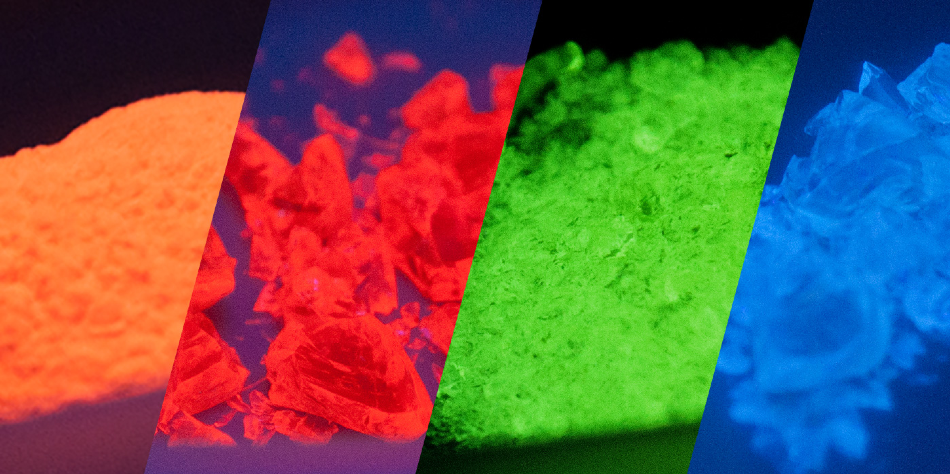Sponsored by Mo-SciJan 17 2020
A set of 17 chemical elements, the rare earth elements (REE) consist of the fifteen lanthanides, scandium, and yttrium. Compounds known as rare earth oxides (REO) are readily formed from rare earth elements as they are typically very reactive with oxygen in the ambient atmosphere. These thermally stable oxides are commonly the final product when fired in the presence of oxygen. The temperatures and the oxygen pressure in the ambient atmosphere are highly influential over the final stoichiometry.

Image Credit: Mo-Sci
As the name suggests, rare earth elements are difficult to obtain in large amounts due to being evenly distributed over the Earth. Due to their similar chemical characteristics and their original discovery alongside the lanthanides, scandium and yttrium are included in the REE’s. While geographically they are widely distributed, REEs are primarily mined in China, India, Brazil, and Malaysia. The largest operation is in China where they are mined, concentrated, and separated. Semi-fabrication also takes place in China, making it important to world production on several levels.
Applications of Rare Earth Elements
Established industries, such as catalysts, glassmaking, lighting, and metallurgy, have been using rare earth elements for a long time. Such industries, when combined, account for 59% of the total worldwide consumption. Now newer, high-growth areas, such as battery alloys, ceramics, and permanent magnets, are also making use of rare earth elements, which accounts for the other 41%.
Rare Earth Elements in Glass Production
In the field of glass production, rare earth oxides have long been studied. More specifically, how the properties of the glass may change with the addition of these compounds. A German scientist named Drossbach began this work in the 1800s when he patented and manufactured a mixture of rare earth oxides for decolorizing glass.
Albeit in a crude form with other rare earth oxides, this was the first commercial use of cerium. Cerium was shown to be excellent for ultraviolet absorption without giving color in 1912 by Crookes of England. This makes it very useful for protective eyeglasses.
Erbium, ytterbium, and neodymium are the most widely used REEs in glass. Optical communication uses erbium-doped silica fiber extensively; engineering materials processing uses ytterbium-doped silica fiber, and glass lasers used for inertial confinement fusion apply neodymium-doped. The ability to change the fluorescent properties of the glass is one of the most important uses of REO in glass.
Fluorescent Properties from Rare Earth Oxides
Unique in the way that it can appear ordinary under visible light and can emit vivid colors when excited by certain wavelengths, fluorescent glass has many applications from medical imaging and biomedical research, to testing media, tracing and art glass enamels.
The fluorescence can persist using REOs directly incorporated into the glass matrix during melting. Other glass materials with only a fluorescent coating often fail.
During manufacturing, the introduction of rare earth ions in the structure results in optical glass fluorescence. The REE’s electrons are raised to an excited state when an incoming energy source is used to excite these active ions directly. Light emission of longer wavelength and lower energy returns the excited state to the ground state.
In industrial processes, this is particularly useful as it allows inorganic glass microspheres to be inserted into a batch to identify the manufacturer and lot number for numerous product types.
The transport of the product is not affected by the microspheres, but a particular color of light is produced when ultraviolet light is shone on the batch, which allows precise provenance of the material to be determined. This is possible with all manner of materials, including powders, plastics, papers, and liquids.
An enormous variety is provided in the microspheres by altering the number of parameters, such as the precise ratio of various REO, particle size, particle size distribution, chemical composition, fluorescent properties, color, magnetic properties, and radioactivity.
It is also advantageous to produce fluorescent microspheres from glass as they can be doped to varying degrees with REO’s, withstand high temperatures, high stresses, and are chemically inert. In comparison to polymers, they are superior in all of these areas, which allows them to be used in much lower concentrations in the products.
The relatively low solubility of REO in silica glass is one potential limitation as this may lead to the formation of rare earth clusters, particularly if the doping concentration is greater than the equilibrium solubility, and requires special action to suppress the formation of clusters.
Fluorescent Glass from Mo-Sci
Mo-Sci offers fluorescent glasses in a range of colors and excitation and emission wavelengths ranging from approximately 10 µm to 600 µm.
References and Further Reading
- Haxel, Gordon B., et al. Rare Earth Elements—Critical Resources for High Technology. USGS
- Wells, Willard H., and Vickie L. Wells. “The Lanthanides, Rare Earth Elements.” Patty’s Toxicology, American Cancer Society, 2012, pp. 817–40. Wiley Online Library, doi:10.1002/0471435139.tox043.pub2.[RDM5]
- Elements, R. The Rare-Earth Elements — Vital to Modern Technologies and Lifestyles. (2004) https://pubs.usgs.gov/fs/2014/3078/pdf/fs2014-3078.pdf
- Strauss, M. L., & Strauss, M. (n.d.). THE RECOVERY OF RARE EARTH OXIDES FROM WASTE FLUORESCENT LAMPS https://mountainscholar.org/
- Jordens, A., Cheng, Y. P., & Waters, K. E. (2013). A review of the beneficiation of rare earth element bearing minerals. Minerals Engineering, 41, 97–114. https://doi.org/10.1016/j.mineng.2012.10.017
- Report, S. I. (2011). Rare Earth Elements — End Use and Recyclability Scientific Investigations Report 2011 – 5094. https://pubs.usgs.gov/sir/2011/5094/
- Adachi, G., & Imanaka, N. (1998). The Binary Rare Earth Oxides, 2665(94). https://pubs.acs.org/doi/abs/10.1021/cr940055h
- Riker, L. W., Optical, S., & Incorporated, G. (1981). The Use of Rare Earths in Glass Compositions, 81–94. https://pubs.acs.org/doi/pdfplus/10.1021/bk-1981-0164.ch004
- Vasconcelos, H. C. and Pinto, A. S. (2017)Fluorescence Properties of Rare-Earth-Doped Sol-Gel Glasses
- Mo-Sci.com Fluorescent Glass Microspheres https://mo-sci.com

This information has been sourced, reviewed and adapted from materials provided by Mo-Sci Corp.
For more information on this source, please visit Mo-Sci Corp.